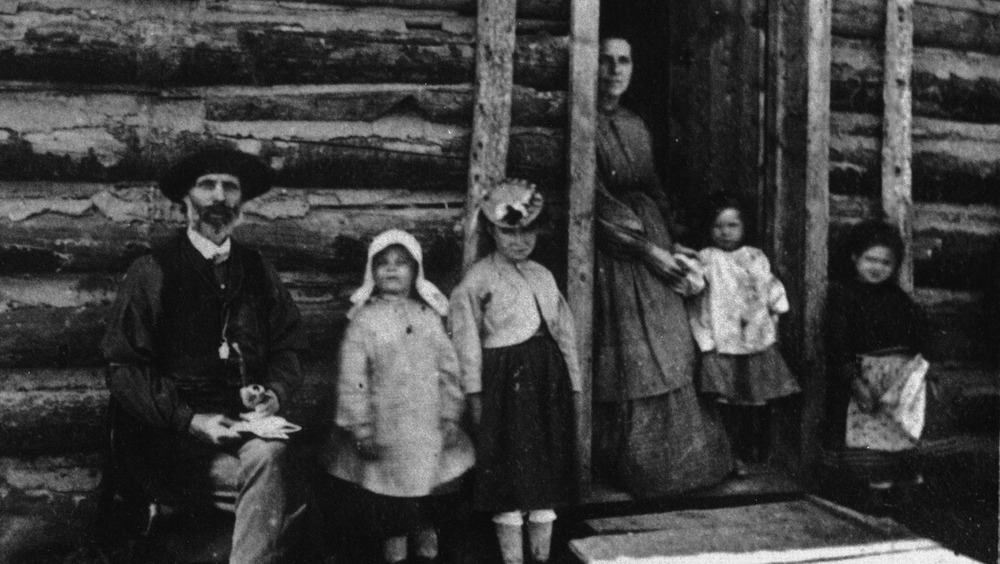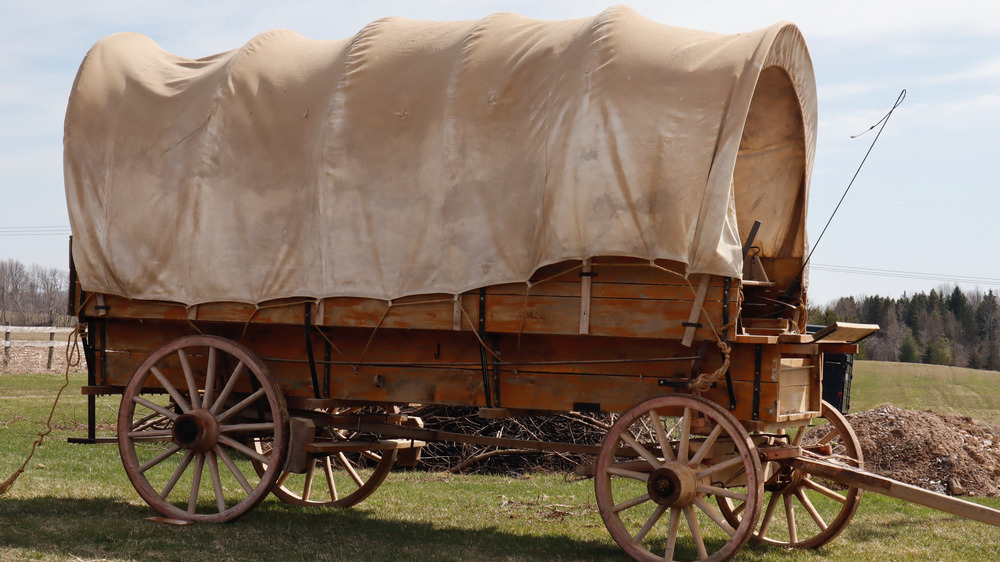The Truth About Life In Log Cabins For Old West Families
Fans of the mid-'70s/early '80s TV series Little House on the Prairie might remember the cozy attic bedroom Laura Ingalls and her sister, Mary, shared in the log home near Walnut Grove, Minnesota, that Pa built. But in reality, those quaint cabins felt drafty, cramped and uncomfortable. Eva Nelson, for instance, came to Montana in the 1880s, and showed disappointment in the home her husband built, saying that her "heart sank the first time I saw the shanty. I was terribly discouraged, and I began to wish that we had never left home," reported WNET.
For pioneers, building a house became a necessary step in the great migration west. The U.S. government demanded a structure be erected as part of the 1862 Homestead Act that granted up to 160 acres of public land to settlers, according to the National Archives. Other requirements asked that the homesteader live on the land while they improved it as well as submitting a registration fee of $18, according to History.com.
The Homestead Act encouraged Americans to settle the west, but had specific instructions to receive ownership of the land. Homes had to be a minimum of 10 by 12 feet in size and had to include a glass window. The provisions that encouraged people to move to the frontier also ultimately discouraged them, with more than "half of all homesteaders" giving up "their claims before their five-year 'proving up' period was completed," according to WNET.
Settling the West, one homestead at a time
Because of this, homesteaders tended to build simpler homes that could be either improved over time, or dismantled and reassembled, until the settler officially owned the land. Despite the simplicity of the cabins, they often offered more comfort than the wagon or tent the people lived in while planting crops and creating housing.
The log cabins could be built in a few days without nails, said Ducksters. All you needed was a tree, axe and saw. Watertight and sturdy, they were first built on a stone or rock foundation to help prevent the logs from rotting. Trees were cleared from the land, stripped of their bark and then squared before being notched, and just like the childhood toy of Lincoln Logs, the logs were placed in an interlocking pattern. Once the main part was made, settlers would "chink" it, also called "daubing" — pushing sticks and wood chips into spaces between the logs, and then pasting in a simple cement, made of earth, sand and water, or even clay.
A stone fireplace would also be put into the home, but rarely flooring; most homes featured dirt or gravel and required daily raking. Most places on the frontier had one room, which became the kitchen, bedroom, living room, etc. Some did have lofts, like Mary and Laura's, for extra space.
Despite their humble history on the plains, some rather famous people lived in log cabins. According to Log Cabin Hub, seven presidents spent time in one, including Abraham Lincoln and Andrew Jackson.

